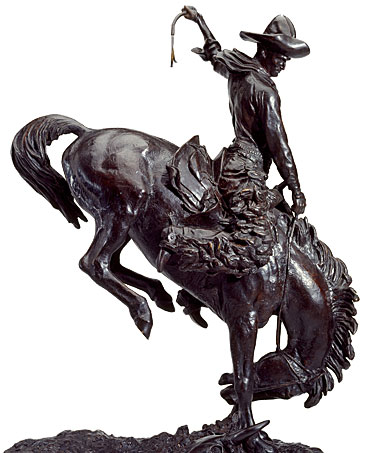Sculptures
Sculptures | Monumental Sculptures | Architectural Works | Museums, Public Collections
Art lessons were encouraged from a young age and Proctor’s early art instructor, J. Harrison Mills, taught him a fundamental principle that forever guided his work: An artist should live the life he intended to depict.
Proctor lived more than the life he depicted. He inhabited each and every detail of his sculptures. On hunting trips as a young man, he dissected and made sketches of animals in order to understand them from the inside out. In search of the perfect lion, he once followed the Ringling Brothers circus from state to state so he could sketch and measure the finest speciman of the king of the jungle. He even went so far as to get inside the elephant cage at the Bronx Zoo to experience the scale of human to animal, barely escaping death by trumpeting pachyderm.
 The spirit he captured in his sculptures reflects a kinship with his subjects. Before starting work on a commission, Proctor spent countless hours interacting with his subjects, whether they were horses, panthers, bison, pioneers, mountain trappers or Native Americans. Then he drew up hundreds of sketches and created small clay models that were enlarged in plaster, to be “pointed up” to his monumental statues.
The spirit he captured in his sculptures reflects a kinship with his subjects. Before starting work on a commission, Proctor spent countless hours interacting with his subjects, whether they were horses, panthers, bison, pioneers, mountain trappers or Native Americans. Then he drew up hundreds of sketches and created small clay models that were enlarged in plaster, to be “pointed up” to his monumental statues.
When modeling human subjects, Proctor first studied them in the nude. This allowed him to master the musculature beneath the surface of clothing. Later on, his subjects posed fully clothed, and he refined his clay models until every crease and fold of fabric was rendered realistically.
Often his subjects were close friends. While working on Indian Pursued, Chief Little Wolf adopted Proctor and his wife Mody into the Cheyenne tribe, honoring Proctor with his own name: Okomahkahchitah, which means Large Coyote. Jess Cravens, who posed for the model of Pioneer, hunted with Proctor and was married in his Palo Alto home. Big Beaver, a Blackfoot Indian, traveled with Proctor in a car from Montana to California to complete On the War Trail. And the subject of The Buckaroo, a horse-taming cowboy named Slim, was bailed out of jail by Proctor when he ran into trouble with the law.
The stories go on and on, and there’s at least one behind every sculpture. This is the beauty of Proctor’s work. His love of hunting, people and the American wilderness emanate from the visages of everything he created.

